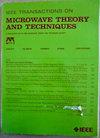TE-Polarized Bessel-Beam Launchers for Wireless Power Transfer at Millimeter Waves: Theory, Design, and Experimental Validation
IF 4.1
1区 工程技术
Q2 ENGINEERING, ELECTRICAL & ELECTRONIC
IEEE Transactions on Microwave Theory and Techniques
Pub Date : 2024-10-02
DOI:10.1109/TMTT.2024.3465011
引用次数: 0
Abstract
Transverse-electric (TE) polarized Bessel-beam launchers working at millimeter-wave frequencies are theoretically described, simulated, realized, and experimentally validated. A limited-diffractive near-field distribution up to the so-called nondiffractive-range distance of about 30 mm has been obtained in this work. To generate a pure TE leaky mode, avoiding undesired transverse-magnetic (TM) field components, an innovative feeding scheme is designed consisting of a circular array of four radial slots. To enhance compactness, the four slots are excited through a single-port meandered microstrip feeding network, which has been optimized to ensure the same signal distribution exciting the slots while minimizing unwanted coupling among them. Full-wave simulations allowed for accurately designing a resonant cavity at 30 GHz able to generate a TE-polarized Bessel beam (BB). Two launchers of this kind are then exploited to create a wireless power transfer (WPT) link whose performance is first computed numerically and then verified by means of measurements for different transmitter-receiver distances, namely 25, 35, and 48 mm. These values respectively fall within, in proximity of, and away from the nondiffractive region of the transmitting (TX) device, showing an increasing WPT performance deterioration, as expected. For the case of a 25-mm distance, the evaluated求助全文
约1分钟内获得全文
求助全文
来源期刊

IEEE Transactions on Microwave Theory and Techniques
工程技术-工程:电子与电气
CiteScore
8.60
自引率
18.60%
发文量
486
审稿时长
6 months
期刊介绍:
The IEEE Transactions on Microwave Theory and Techniques focuses on that part of engineering and theory associated with microwave/millimeter-wave components, devices, circuits, and systems involving the generation, modulation, demodulation, control, transmission, and detection of microwave signals. This includes scientific, technical, and industrial, activities. Microwave theory and techniques relates to electromagnetic waves usually in the frequency region between a few MHz and a THz; other spectral regions and wave types are included within the scope of the Society whenever basic microwave theory and techniques can yield useful results. Generally, this occurs in the theory of wave propagation in structures with dimensions comparable to a wavelength, and in the related techniques for analysis and design.
 求助内容:
求助内容: 应助结果提醒方式:
应助结果提醒方式:


